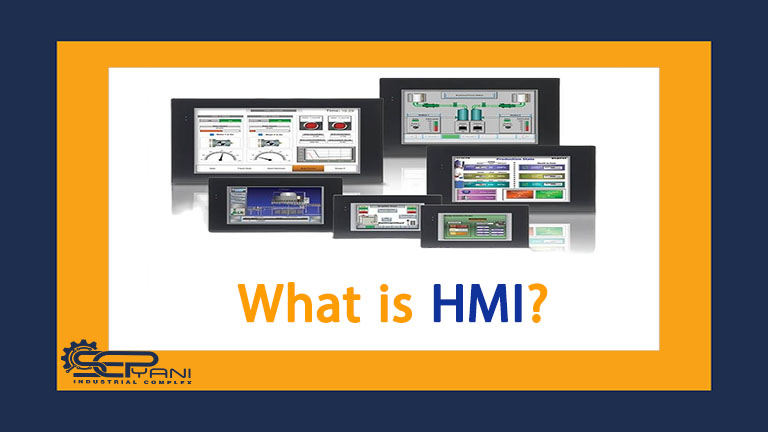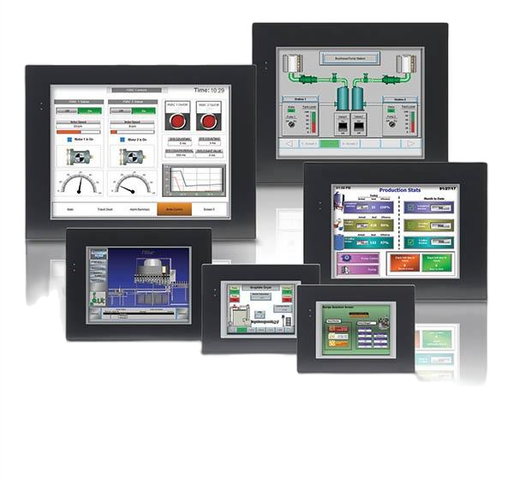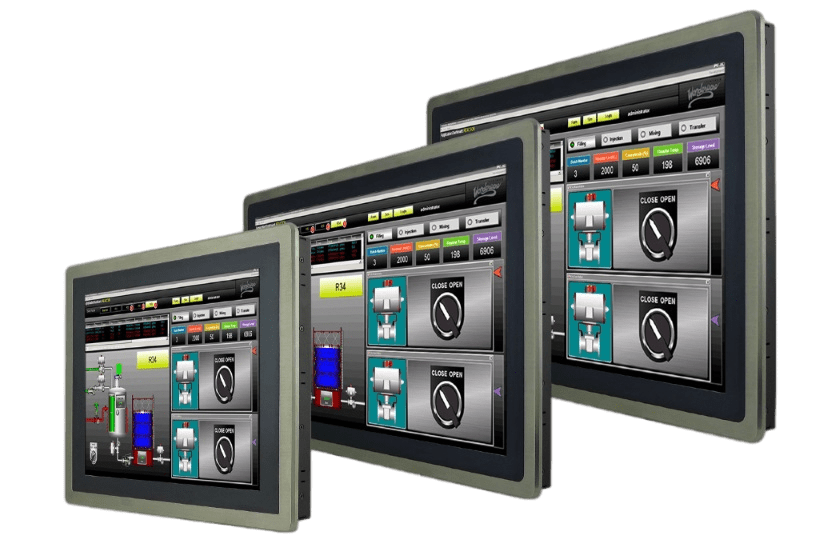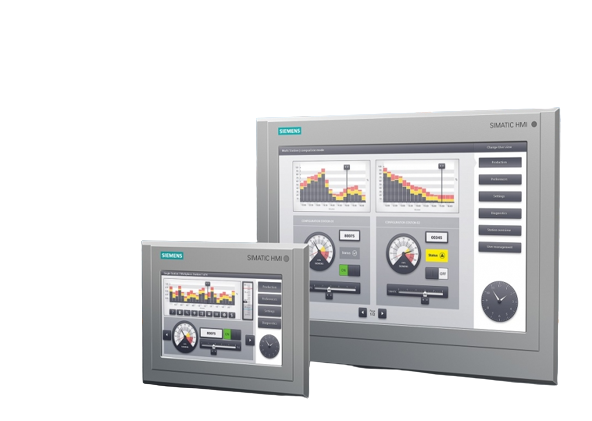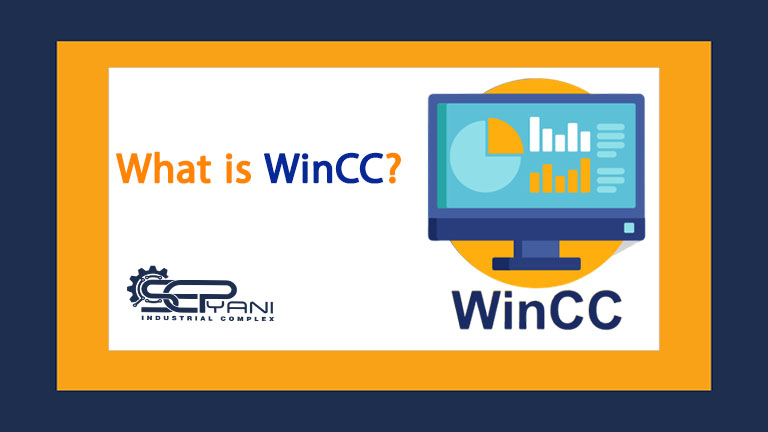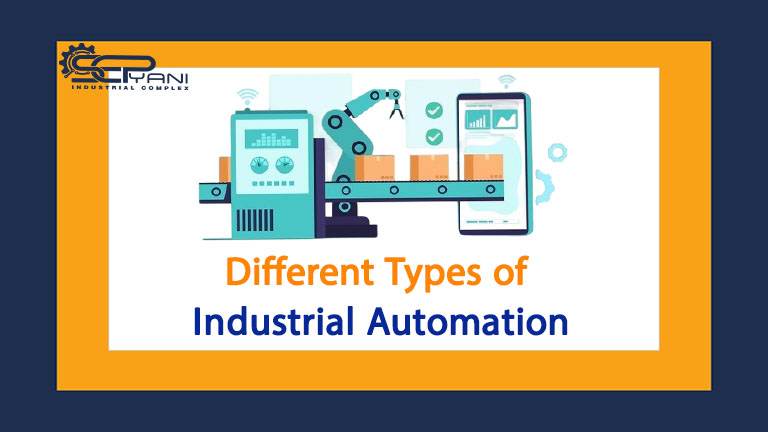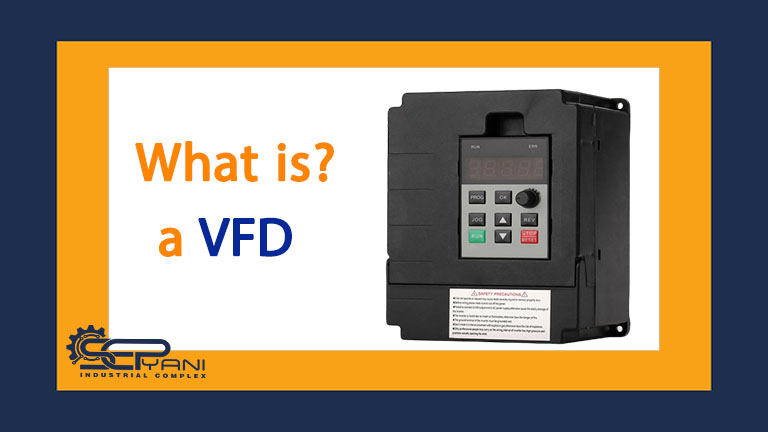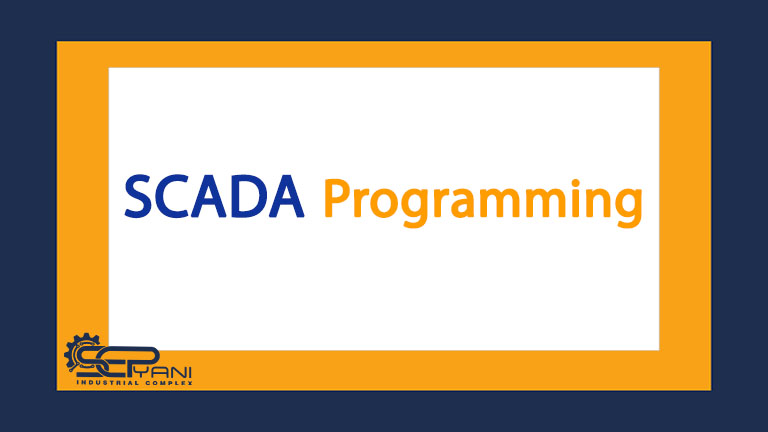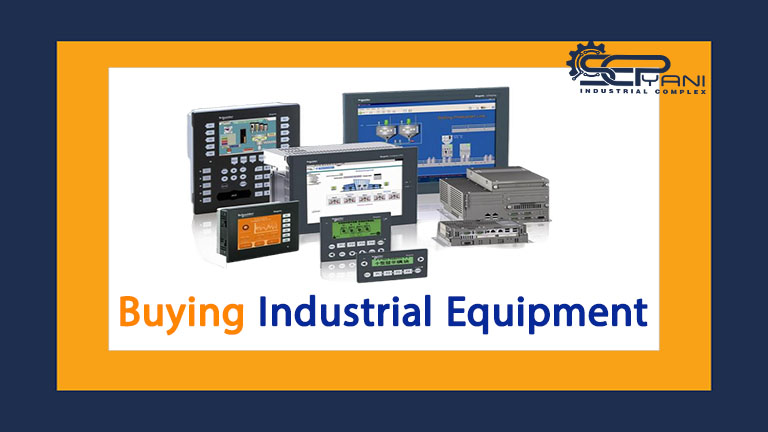What is HMI?
HMI stands for Human Machine Interface. HMI refers to a platform that enables a user to interact with a machine, computer program or system. Technically, you can apply the term HMI to any display that someone uses to interact with a device.
But this term is usually used to describe displays that are used in the industrial context. HMIs display data in real time and allow the user to control machines using a graphical user interface.
What is Industrial Automation?
What is the application of HMI?
HMIs can be for communication and control of a machine or used for larger and more complex applications. In the industrial context, they are often used for machine and process control, communicating motors, sensors and actuators from the production side of the factory with systems such as I/O programs and PLCs. HMIs that transmit data to the cloud or to enterprise systems enable the integration of data from dozens of motors and other equipment for more centralized monitoring and control of a factory’s entire process.
HMIs may be on the machine or device itself, in a portable, handheld device, or in a central control room. Human-machine interfaces for countless applications in manufacturing, automotive, processing and other industries such as:
- Food processing
- drug manufacturing
- Oil and Gas
- Mining operations
- SCADA systems
- Applications of robotics
- Transportation
- etc.
Differences between PLC and DCS
Application of HMI in daily life:
Most people use HMI regularly in their daily life. Although they may not realize that when they adjust the temperature controls in their vehicles or program their microwave, they are engaging with a human-machine interface to interact with their cars and devices. In industrial applications, HMIs are often used to communicate more and more complex equipment that is capable of handling the volume and complexity of inputs and outputs necessary to operate industrial machinery or plant-level startups.
Uses of HMI:
HMI is widely used in many industries. It is common in the production of all kinds of goods, from cars to food and pharmaceuticals. Industries such as energy, water, wastewater, buildings, and transportation may also use HMI. Because of advantages such as system integration, HMIs are often used by operators and engineers, especially process control system engineers. These professionals may use HMI to control machines, vehicles, factories or buildings.
Difference in HMI user type:
The use of HMI varies depending on the complexity of the equipment or system it is used for. It also varies depending on how the HMI is used. You may use an HMI, for example, to monitor a piece of machinery, or for a variety of purposes, including monitoring plant operations and controlling equipment.
The role of SCADA and HMI in process control:
When your SCADA system communicates with programmable logic controllers (PLCs) and input/output sensors to obtain information about equipment performance, this information is displayed on an HMI. An HMI may display this information in a graph or other graphical representation that makes it easy to read and understand. With HMI, you can see all the performance information of a facility’s equipment at once and have a good view of your factory’s production process. Operators can also view and manage alarms using the HMI and take quick action to fix faults.
Operators can also use HMIs to control equipment to increase productivity or adapt to changing conditions. The ability to make relevant changes directly from the screen makes this process faster and easier.
As the Internet of Things (IoT) continues to play a large role in industrial facilities, HMIs can become even more useful. You can use them to view information and control various equipment.
The future of human-machine interaction:
Currently, there are various predictions for the future of the next level of human-machine interaction. Technologies such as cloud computing, cognitive computing, and the Internet of Things (IOT) are expected to play a role in the development of the next level of human-machine interaction. However, there is no doubt that there will be many advances in human-machine interaction that will increase productivity in various industries.
HMI advantages:
HMIs provide several benefits to today’s industries, including:
Improved system monitoring:
A high-performance HMI gives you better visibility into process control. It allows you to see the performance of your equipment at once. You can even view this platform remotely. These features help you improve productivity over time and respond to alerts faster.
Increase Productivity:
Since an HMI provides persistent access to real-time data, you can use it to monitor production and adjust variable values in real-time. Data visualization, especially when combined with data analysis technologies, can help you identify areas where you can improve your process efficiency.
Reduce downtime:
With alerts on a central platform, you can respond to issues faster and reduce downtime. Viewing and analyzing equipment performance data can also help you identify signs of future mechanical problems and fix them before they become problems that could cause significant downtime.
Improved features by the user interface:
HMIs make it easier for users to view and understand information and how control equipment works. They present data using charts and graphs that make it easy for users to interpret quickly. Users can also customize their platform according to their needs and preferences.
Integrated system:
You can control all the equipment using one platform that makes it easy for operators to learn how to control the equipment. You can also view all your data in one place, helping you have a clear overview of your entire facility. In addition, all users receive updates in real time.
Difference between HMI and SCADA:
HMI and SCADA are sometimes confused because of their similarities and the fact that they work together. In fact, HMI is often part of a SCADA system. The SCADA system is used to control entire large systems such as a factory or power plant. It is a combination of other systems including PLCs, sensors and RTUs. The SCADA system is responsible for collecting data and recording them. It can also control the equipment process automatically.
On the other hand, HMI is the interface that a person uses to interact with the SCADA system and other systems and equipment. They are both essential elements of the larger industrial control system. While SCADA collects and stores data. HMI enables users to interact with and manage equipment by providing a user-friendly platform. Use of HMI and SCADA is essential. Without SCADA and HMI there would be no information to display or control the equipment. Additionally, without an HMI system users cannot see the data the SCADA system collects or tell them how to control the equipment.
SCADA and HMI are part of a larger system. SCADA works in the background while HMI is usually the only element that users interact with.
Improvements in HMI:
Advances in technology and evolving business needs have led to changes in the performance of HMI technology. Touch screens, mobile devices, cloud-based HMIs, and high-performance HMIs are becoming more common.
The term high-performance HMI refers to an HMI design approach that aims to draw the user’s attention to only the most important elements. This helps users to see and respond to technical problems in the process more quickly and easily, and get the information they need to make decisions. The indicators of this type of HMIs are simple and the platforms do not include unnecessary graphics and controls. Other unnecessary elements are used less in the design so as not to divert the user’s attention from the most important things.
The impact of advanced technologies on HMI:
Advanced technologies such as the Internet of Things and data analysis technologies have a greater impact on HMI. As more connected devices come online, HMIs can collect more data and become part of the IoT network. Advanced data analytics techniques used alongside HMI/SCADA software can help companies make the most of the data provided on their platform.
Multi-Touch capability:
Touch screens became popular with the advent of smartphones. So much so that thanks to the multi-touch screen, users can interact with it simultaneously using multiple touches and gestures. With multi-touch capability, you can use two fingers to zoom in and out, drag and drop screen elements, and other intuitive gestures. Some of the advantages of Multi-Touch HMIs are:
Improved startup security:
Intuitive HMI control means fewer errors. Multi-Touch also has two-handed functionality. This means that users cannot perform some actions using only one hand. This feature helps to avoid costly and dangerous mistakes.
Usability:
Using intuitive multi-touch functionality instead of complex menu structures, user-friendly searchable toolbars make it easy for users to drag elements around and get the information they need.
Reducing time for user mastery:
The ease of use of Multi-Touch helps to reduce the time for the user to master. Users can understand how to use the system faster, and users with less experience can easily complete more projects.
Durability:
Without mechanical parts, touchscreens can work better than keyboards, mice, and other controls in harsh environments. This means your equipment will last longer and work more reliably.
flexibility:
With a touch screen, process changes do not require rewiring the control panel. Instead, you can simply update your software. Users can also easily create their own custom platforms based on their needs and preferences.
Remote monitoring:
Another valuable feature of modern HMIs is remote monitoring. Users defined in the system can access platforms and reports through a browser from anywhere and through a computer, tablet or smart phone. This means that you can check the operation and change the required parameters. Remote monitoring allows you to monitor and control outside of working hours.
The future ahead of HMI:
As data plays a more prominent role in industrial processes, HMI becomes more important. This technology has made significant progress in recent years. But it will continue to improve in the future.
More and more companies tend to use HMIs with high user-friendliness that draw users’ attention to only the most important information. This helps users understand all available data and avoids information overload. Also, companies are increasingly using multi-touch screens, remote monitoring, and cloud-based systems.
The impact of smart technologies on HMI:
As technology continues to evolve, companies will increasingly use advanced data analytics and artificial intelligence to draw conclusions from data. Then they can transmit these results to users through HMI. In the future, HMIs may also combine augmented reality (AR), which overlays digital graphics over the real world, and virtual reality (VR) technology, which places users in the digital world, to create more effective visuals for HMI users. As automation continues to play a central role in industrial processes. Users can use HMIs to monitor automated activities and adjust them as needed.
Conclusion:
Sepyani Industrial Group is ready to provide services in the field of designing, setting up and maintaining industrial automation systems using HMI displays with the ability to communicate in the form of web servers and other smart capabilities. With the use of smart HMIs, you will be able to communicate with the HMI at the production site through a mobile phone and see how to control the production process and other information. You can also download production statistics, the amount of work of each tool, etc. separately as an Excel file or view them online. To get a free consultation, contact us through the contact page.

